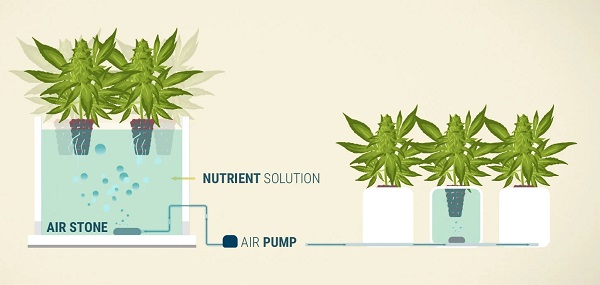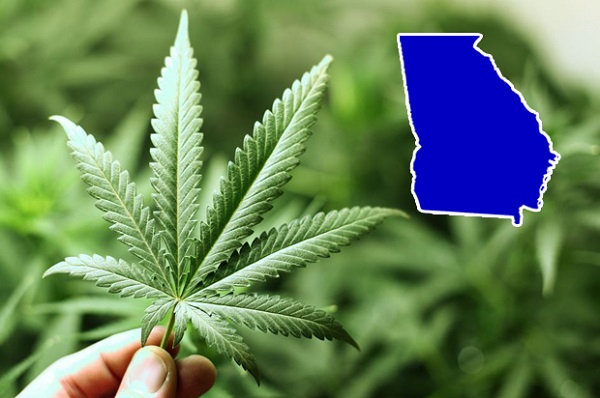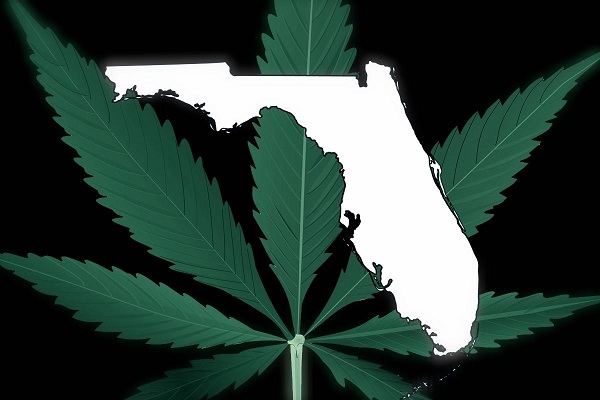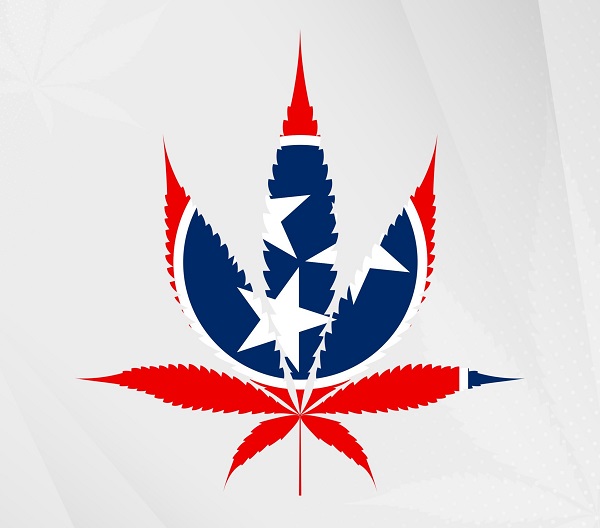Many techniques for training cannabis plants exist, but only a few have been used for decades and have proven to be effective. Increasing yields, controlling crowns and optimizing light are the main reasons for using techniques such as pruning. Today we want to expose the most common plant training practice: how to handle cannabis.
Topping, low-stress training, supercropping, sea of greens and scrogging are just a few of the training methods used by cannabis growers to control the overall shape of the plant. High-growing varieties can be trained to grow wide rather than up. Some growers remove the top part of the plant to make it more compact and dense. In many cases, growing different varieties of cannabis indoors requires training the plants to maintain the crown at an optimal level.
One popular technique often used in horticulture is topping. Topping involves removing the top of the plant. We realize that removing the top may seem counterintuitive, since this is where large inflorescences are formed. However, the yield of the plant increases when the top is removed.
The purpose of training the plant is to maximize the quality of the buds, creating a few inflorescences instead of one huge inflorescence on the main meristem, and to increase the yield. Using cannabis training methods, such as topping, increases yield by increasing the number of areas with top buds.
Why is it good to remove the top?
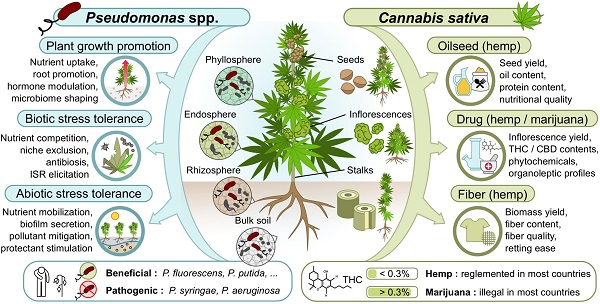
Three key reasons cannabis growers use topping for plant training have to do with space control, hormone balance and light optimization. Let’s take a closer look at each of these reasons and how topping can contribute to success in the garden.
When growing naturally, cannabis tends to take the shape of a Christmas tree, with wide lower branches to make the most of available light. Removing the top causes the lower branches to no longer be shaded by the large leaves above. More light for more leaves means increased photosynthesis, which in turn gives the plant more energy to grow and develop buds.
Topping cannabis can also be used as a height control tool in confined spaces with low ceilings. This method is also effective for creating an even layer of plants. If gardeners grow different varieties of cannabis and one of them becomes significantly taller than the others, topping that plant will help bring it back to a level that is more comparable to the others.
Cannabis topping can be a useful plant management tool if the grower is allowing the plant to overgrow during the vegetative stage. Most varieties nearly double in size during the transitional «stretching» phase, when flowering begins. If the plant is already close to a light source and there is concern that it will grow too tall after stretching, topping can help curb its growth and bring it back under control.
Topping the plant has several physiological benefits. When the top of the cannabis plant is removed, the lower branches rise to form a dome. These branches become thicker and stronger and often need less support. The main physiological reason for topping in any plant is a redistribution of auxins and hormones when apical dominance is disrupted.
As a result of topping, auxins and growth hormones are no longer concentrated at the highest point and are distributed evenly throughout the crown. This promotes even growth of multiple buds, not just at the highest point. Having more «top» buds instead of just one big bud increases yields, especially when combined with other plant training methods.
One of the reasons cannabis growers strive to create an even crown is to maximize the amount of useful light (PPFD) reaching the plant. An even layer of foliage ensures an equal distribution of light to the greatest number of buds. If plants are grown without training, their main stem can be much higher than the bulk of the lower branches and buds.
To adapt to this higher top stalk, the light source must be placed farther away from most of the buds, resulting in lower PAR for the main mass of buds. With an even layer of leaves, place the light closer to most of the top buds.
In general, when you prune a plant (or even a few side branches), two new branches emerge in place of the old one. The growers then have two spots for buds, which is one way that pruning can increase yields. Changing the distribution of growth hormones also promotes lateral branching of the plant. Together, these two benefits lead to a larger, thicker plant than a plant grown without pruning.
When to plant a cannabis plant?
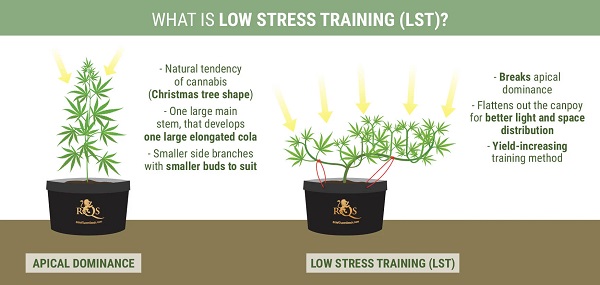
Pruning cannabis plants is usually done at the vegetative stage. In cases of an extremely fast-growing plant during flowering, pruning may be the only option, but most cannabis plants are pruned at the vegetative stage. Most gardeners prune the plant once or twice. This training technique can be applied several times, allowing the plant to regrow between treatments.
Often growers will mention the node number at which they are pruning the plant. It is best to proceed at your own discretion. Gardeners usually recommend trimming between the 5th and 7th nodes. However, the height of the plant by nodes 5-7 can vary depending on the morphology of the indica or sativa. Consider the height of the garden space and the typical extension of the variety, and prune the plant accordingly.
Other growers allow the plant to enter the vegetative stage before leading the cannabis plant. An established root system helps the plant recover faster compared to a seedling with a less developed root system. Gardeners can prune a few of the lower branches before deciding where to place the top. Removing some of the lower shoots will affect how many branches (nodal spaces) to leave in front of the top of the plant.
In both cases, you only want to prune a healthy plant, as this method causes some stress. Although the plant is lightly shocked, with reliable genetics, pruning the plant should not cause hermaphroditism. Topping cannabis plants is the most common of all plant training methods.
Sharp processing of the cannabis plant
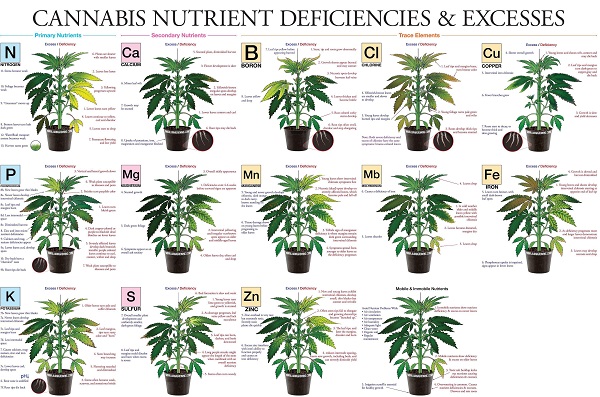
Gardeners will need only one tool to handle the plant: a sharp, sterile blade. Many cannabis gardeners prefer to use scissors for pruning, while others choose new razor blades. As with clone care, growers should make the cut at a 45-degree angle, not straight across.
When pruning a mature plant, make the cut 2-3 cm above the last node you want to branch out. The severed part of the stem will wither and shrink a little. Leaving this extra space will allow this process to take place without compromising the strength of the branches at the top node.
To count the knots, start with the first set of lower branches and work your way up. Each pair of branches above represents a new knot. Nodes are where branches join the stem, usually one branch on each side of the stem. Using this method of pruning plants, gardeners count the knots on the main stem to determine where to make the top cut.
Conclusion
After treating the cannabis plant, give it a few days or even a week to recover from the stress. Do not treat the cannabis plant and immediately move it into the flowering phase. Care for and nourish the plant; a healthy cannabis plant can handle a variety of learning methods and stress.
By taking this simple approach to plant training, you can get more abundant yields, grow different varieties side by side, and maximize your energy efficiency per unit area.
Topping as a plant training method is often used in combination with other approaches. LST (Low Stress Training) techniques, such as bending branches or tying them, are another way to control the crown and disrupt the top-dominance of the plant. A cannabis training technique called «Mainlining» is a combination of topping and LST.
Our goal is to unravel the secrets of these growing techniques and make them available to all amateur gardeners. We will cover LST, supercropping, combing and more in the following plant education articles. What techniques would you like to learn more about? Which plant training methods appeal to you the most? Share your opinions in the comments. We wish you the best of luck in gardening!

